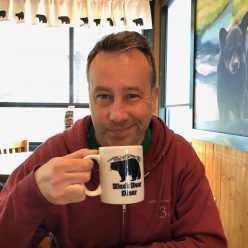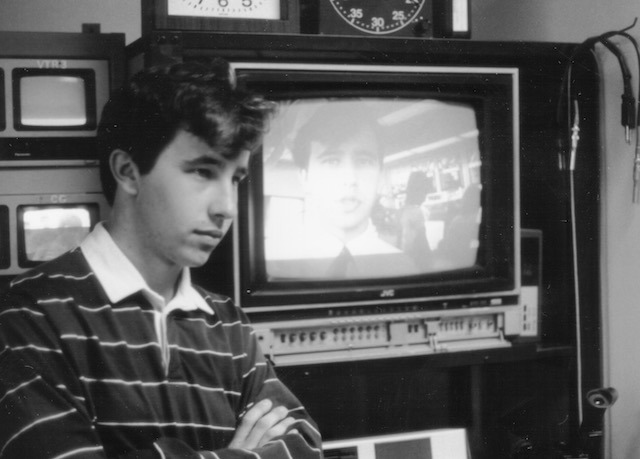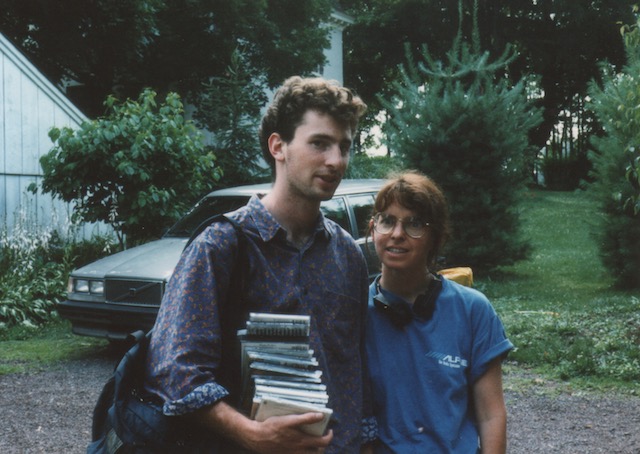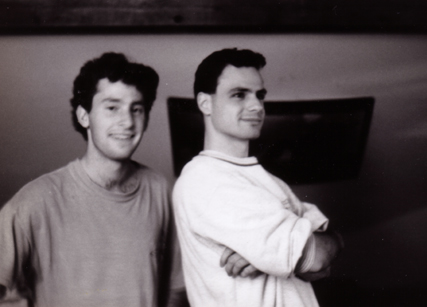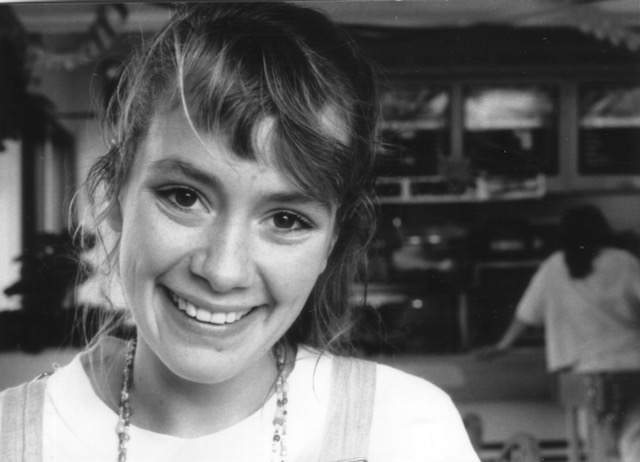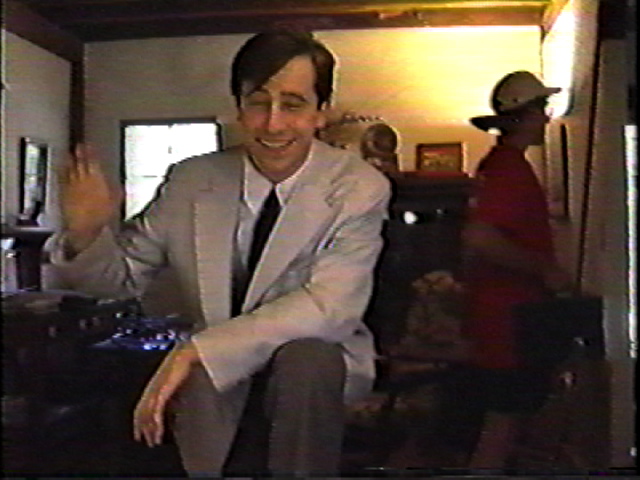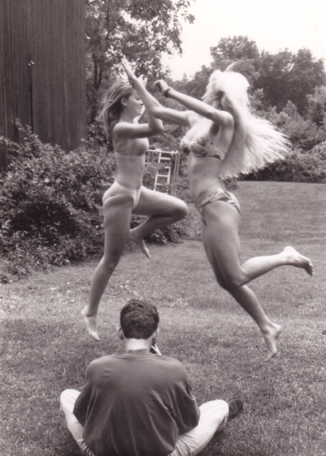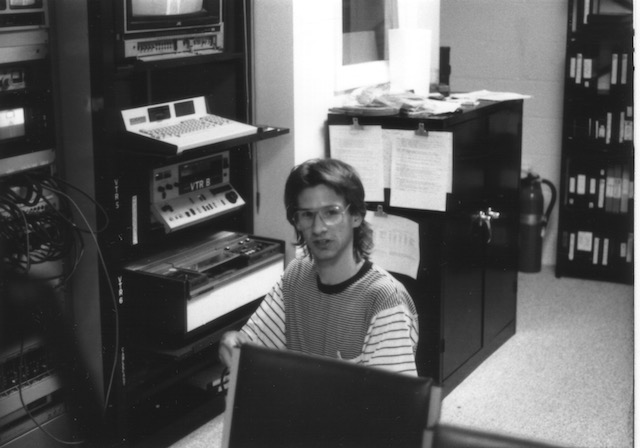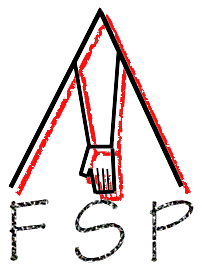
Fearsome Symbolism Productions Presents was our second FSP show and represents an escalation of cringe worthiness that has not aged gracefully on nearly every front. It starts with the violent armed takeover of the local community access TV station studio by white domestic terrorists to a soundtrack of Public Enemy’s “Fight the Power,” and I think that’s probably the high point of the whole thing.
FSP Presents was our first show done specifically for broadcast on local access cable rather than for school. As a courtesy to our millennial viewers I should explain that local access television was how crazy people distributed videos before YouTube, except that it could only be seen by insomniacs and chemically impaired people tuned to a specific unpopular TV channel late at night.
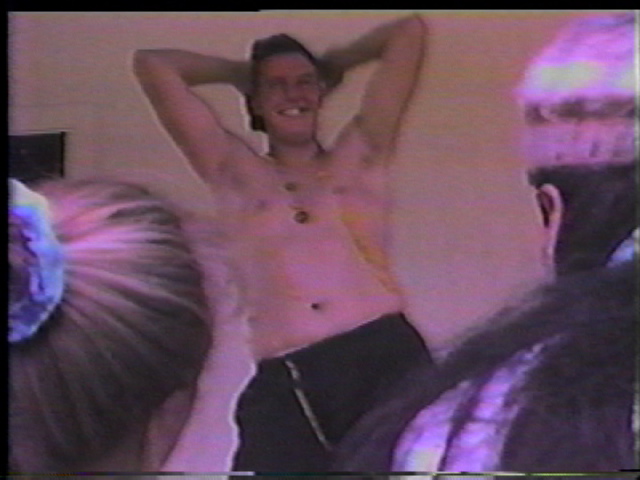
FSP Presents ended up as a grab bag of topical comedy sketches, TV parodies and three musical numbers thrown in for good measure. Oh, and we even ripped off the David Letterman “Top 10 list” format, too. The quality of content was not measurably improved from The Man In the Long Black Coat, but at least it was all the hell over the place. Yay?
Luke Irwin had moved mostly behind the camera, and Brian Kehs and Doug Klumpp stepped in. Neil Binkley and I carried the bulk of the on-camera embarrassment, although this time around we reached further afield for cast members and included actual grown-ups. We expanded our locations from half a dozen to “wherever in the Doylestown PA area there was not someone in the background messing up the shot,” including an actual Chinese restaurant and a comic book store.
The band “Chromatic Aberration and the Hippies” was a group of friends who were willing to record in front of Neil’s barn in exchange for, I believe, snacks. And yes, the version of “Proud Mary” that runs over the end credits does in fact hold the record out of the more than 1,500 recorded versions of that song as “pitchiest.”
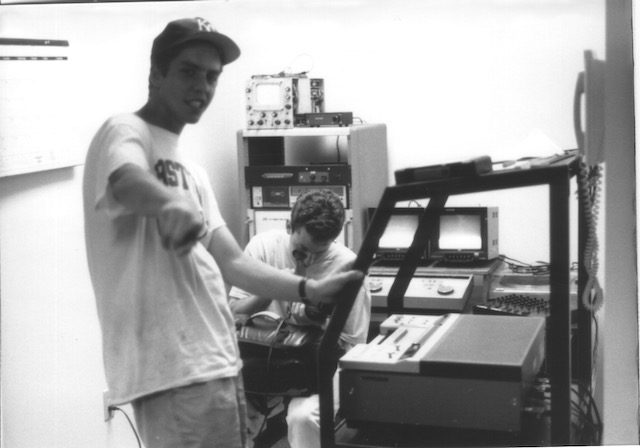
Having Suburban Cable’s 3/4″ video cameras to shoot with and their community access studio for editing meant that the technical quality of the product at least was significantly improved over Long Black Coat. We had to stretch out our ending credits to cover the aforementioned “Proud Mary” rendition so we availed ourselves of the text editor to keep churning out credits to fill up the time. That, for example, is why you find a food & beverage credit for Sung Ik Song, a kindly old Korean grocer in Germantown who only sold malt liquor and thought we were Temple students so he never checked our IDs.
To be fair to ourselves, at the time it was still funny to be suburban white kids obsessed with Public Enemy and wanting to co-opt rap culture and have a whole segment pay off with a joke about an angry Chinese director named Spike Li. I swear that back then it really was actually mostly kind of okay! Or at least it seemed like a good idea at the time. And I got to strap fireworks to the back of a cardboard cutout cat and set it off, which is sort of a life highlight, so there’s that.
Click the image or link below to watch:
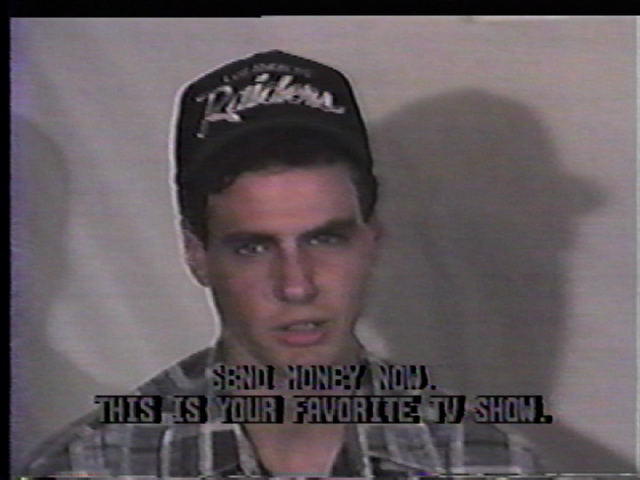
http://www.fearsomesymbolism.com/media/FSPpresents.m4v
Cast
Neil Aldridge
Rob Berthold
Bob Binkley
Neil Binkley
Andrea Bulera
Jeffrey Carl
Ben Chong
Lauren Crouthamel
Yvonne Evans
Wayne Fry
Sue Fabry
Luke Irwin
Denise Kapeczynski
Brian Kehs
Doug Klumpp
Jill Miernicki
Stan Ruddick
Scott Schneider
Dickie Sidon
Chandra Theesfeld
Crystal Theesfeld
Maggie Wallace-Cullen
Tammy West
Lee Woulfe
Chromatic Aberration members: Sairam Menon, Keith Atkins, Tim Eggleston, Brian Miller, Brian Russell and Brian Denner
Crew
Directed by Jeffrey Carl and Neil Binkley
Produced by FSP
Written by Jeffrey Carl, Neil Binkley, Brian Kehs and Luke Irwin
Edited by Neil Binkley and Luke Irwin
Cinematographer: Neil Binkley
First cameraman: Luke Irwin
Peon cameramen: Brian Kehs and Jeffrey Carl
Script editor: Bob Binkley
Special effects by Industrial Exploding Cats & Magic
Art direction by Jeffrey Carl & Brian Kehs
